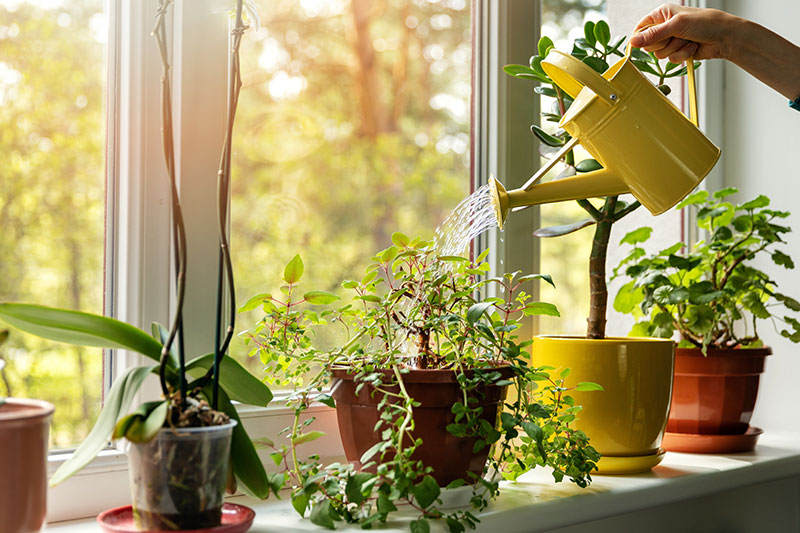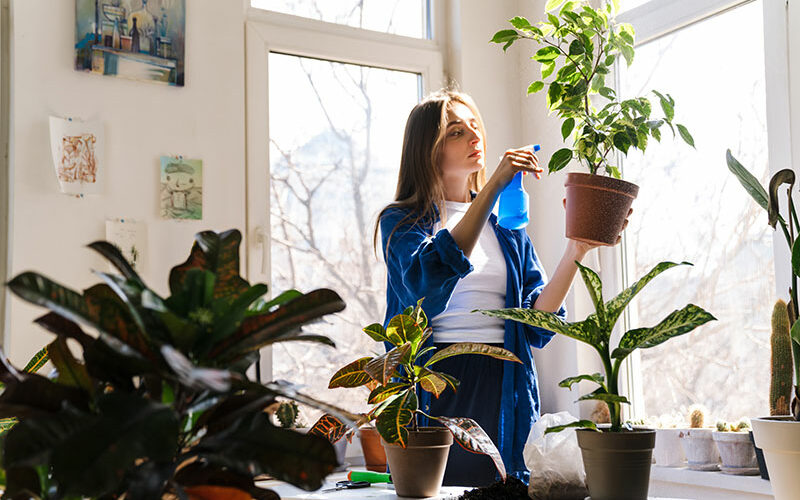Advertisement
Indoor plants are a great addition to enhance the aesthetic appeal of a space. But aesthetics aside, indoor plants also have numerous benefits, including improved air quality, stress reduction, and increased productivity. However, growing indoor plants also comes with responsibility, and that is to keep them healthy and alive.
This article provides essential tips for keeping your indoor plants alive and healthy, from selecting the right plants and providing adequate light to utilizing self-watering pots and repotting when necessary. Following these suggestions can help you create a thriving indoor garden that brings beauty, freshness, and life to your space.
Choose the Right Plants
As much as some plants look like a beautiful addition to your home, not all can thrive in your region’s climate, let alone inside your space.
For beginners, you may first experiment and opt for some easy-to-care-for, low-maintenance indoor plants like snake plants, pothos, spider plants, and ZZ (Zamioculcas zamiifolia) plants. It’s best to take your time to research the plants’ requirements before purchasing them to ensure they’ll thrive in your space.
Water Wisely
Water is food for plants, but overwatering is among the leading causes of indoor plant death. To avoid this, develop a consistent watering routine and pay close attention to each plant’s specific needs.
If you’re struggling with overwatering or underwatering your plants, you may consider investing in self watering pots. These pots can be a helpful addition to your indoor plant care routine. These pots contain a built-in reservoir that stores water and gradually releases it to the plant’s roots through a wicking system. This feature ensures a consistent moisture level in the soil, minimizing the risk of root rot and drought stress.
Self-watering pots are also particularly useful for busy individuals or those who travel frequently, as they help maintain the plant’s hydration without constant attention. However, be wary that self-watering pots are not a substitute for proper plant care; you still need to monitor soil moisture and replenish the reservoir.

Provide Adequate Light
Light is a critical factor in the growth and well-being of indoor plants. Ensure that your plants receive sufficient natural light by placing them near windows, skylights, or doors with glass panes. If your space has limited natural light, consider investing in artificial grow lights to illuminate your plants.
Monitor Temperature and Humidity
Some indoor plants have specific temperature and humidity requirements. Most thrive in temperatures between 65-75°F (18-24°C) and 40-60% humidity. It would help to monitor the humidity and temperature in your space and adjust them accordingly with air conditioners, heaters, humidifiers, or dehumidifiers. Otherwise, if the humidity or temperature is too high or too low, it can cause your plants to wilt and die.
Use The Right Soil
Indoor plants require well-drained, nutrient-rich soil to thrive. So, use a high-quality potting mix designed for indoor plants, and avoid using outdoor soil, as it may contain pests, diseases, and inadequate nutrients. Some plants, such as orchids or cacti, may require specialized soil. In that case, it’s best to purchase a potting mix specifically formulated for those species.
Fertilize Your Plants Regularly
Like water, fertilizer is also considered food and vitamin for indoor plants. These plants need regular fertilizer feeding to ensure steady growth and robust health. Apply a balanced, water-soluble fertilizer every 4-6 weeks during the growing season (spring and summer). Meanwhile, reduce the frequency of fertilization during the dormant season (fall and winter). Additionally, read and follow the manufacturer’s instructions when applying fertilizer to avoid over-fertilization, which can lead to poor plant health.
Prune and Trim When Necessary
Regular pruning and trimming help maintain your plants’ shape, remove dead or diseased foliage, and encourage new growth. You can use clean, sharp scissors or pruning shears to remove any yellowing, browning, or dead leaves. Then, pinch back leggy growth on plants like pothos or spider plants to encourage bushier growth.
Regularly Inspect for Pests and Diseases
Regularly check your plants for signs of diseases or pest infestation. Common indoor plant pests may include aphids, mealybugs, spider mites, and whiteflies. If you notice any infestations, treat them promptly with insecticidal soap, neem oil, or other appropriate treatments before the infestation could kill your plants.
Also, monitor your plants for symptoms of diseases, such as wilting, yellowing leaves, or black spots. If you suspect an infection, isolate the affected plant and consult a plant care professional or conduct research to identify the problem and the appropriate treatment.
Clean The Leaves
Dust and grime can accumulate on your plants’ leaves, blocking light absorption and reducing photosynthesis. So, gently wipe the leaves with a damp cloth or sponge to remove dirt and dust. For plants with delicate leaves, use a soft-bristled brush or spray them with a gentle stream of water. Cleaning your plants’ leaves improves their appearance and enhances their overall health.
Repot When Needed
As indoor plants grow, they may outgrow their containers, leading to root-bound conditions and reduced growth. To ensure your plants’ continued health, repot them, when necessary, typically every 1-2 years. Then, water thoroughly after repotting to help the plant settle into its new home.
Wrap Up
Keeping indoor plants alive and healthy requires consistent care and attention. Remember to be patient and adaptable, as each plant has unique needs and preferences. With time and experience, you’ll become a skilled indoor gardener capable of nurturing various lush, vibrant indoor plants.

